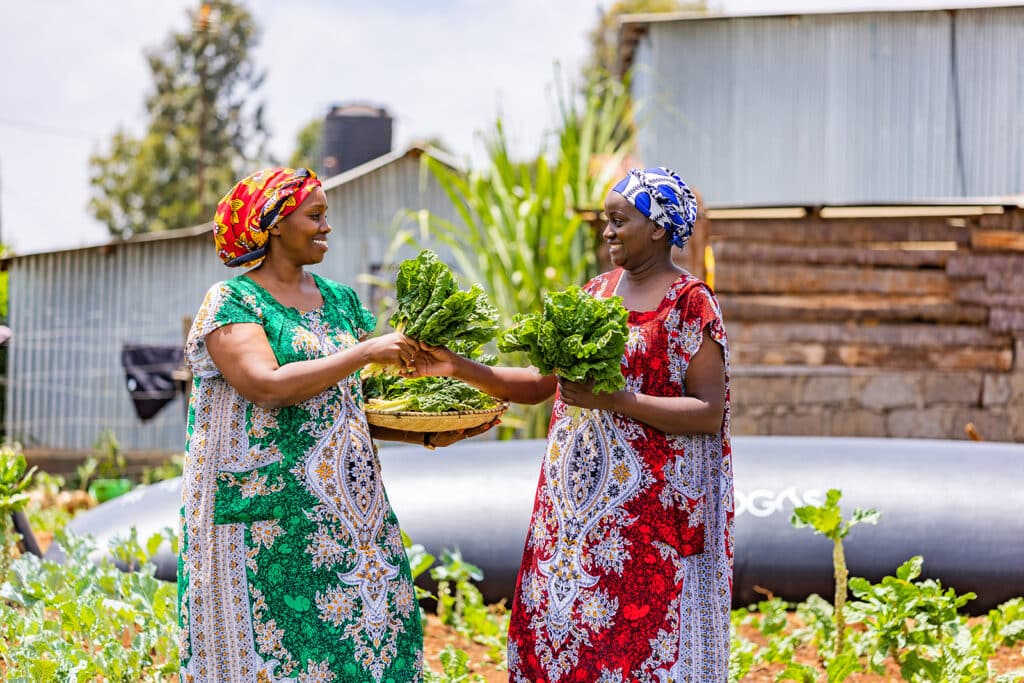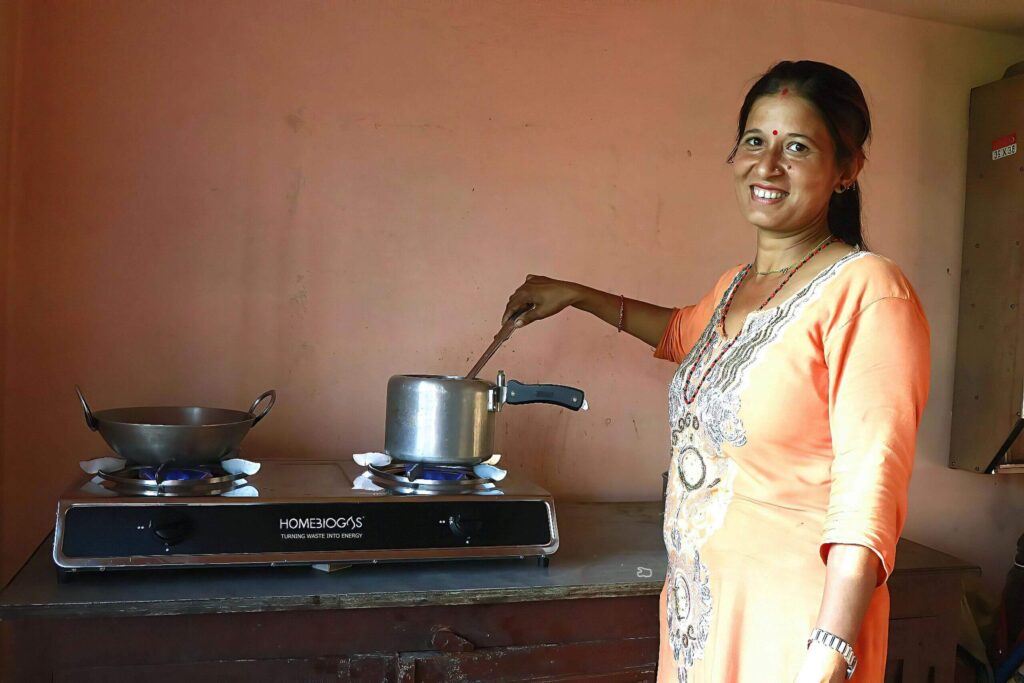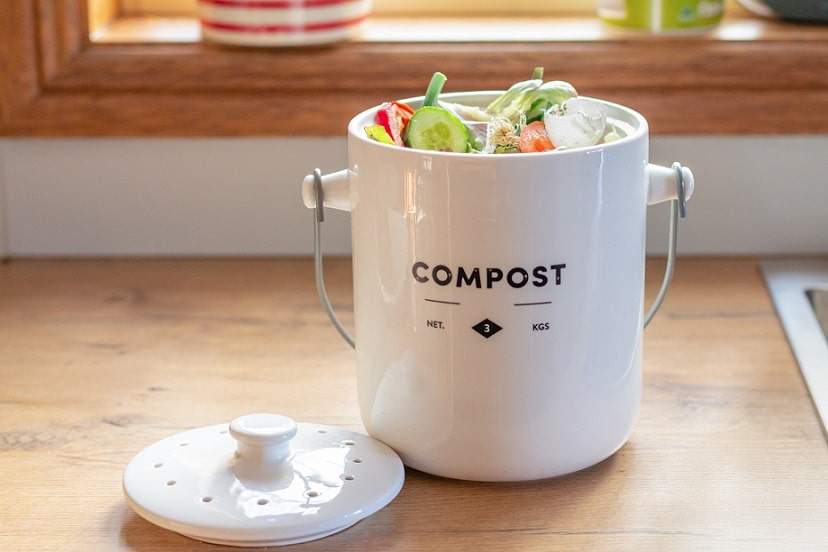
What is Compost?
Compost is nutrient-rich, decomposed organic matter that gets added to soil to improve its quality for gardening, horticulture, and agriculture. Using compost on your soil facilitates plant growth through organic processes with several environmental, financial, and social advantages.
The mix results from a natural decomposition process of two types of elements:
- Brown ingredients: straw, dried leaves, twigs, branches, peat moss, conifer needles, corn stalks, coffee filters, coffee grounds, or other home compostable products.
- Green ingredients: grass clippings, food waste, tea leaves, seaweed, kelp, vegetable, and fruit scraps
The choice of composting techniques available to modern gardeners might be daunting. The two standard options are the old-fashioned compost pile and the more contemporary compost bin.
A compost pile is a loose collection of decomposing materials, frequently left out in the open. Many gardeners enclose their compost with DIY constructions to preserve the materials in one place and prevent wind, rain, and animals from spreading the mix.
On the other hand, the compost bin is an enclosed container in which brown and green ingredients decompose without impacting the surroundings. Most bins have an open bottom to provide quick access to worms and other bacteria that can speed up the decomposition process.
How to Start a Compost at Home for Beginners
If you’ve never made compost before, start by understanding the what, why, and how of composting.
WHAT to add to the compost bin or pile:
Vegetable peelings, fruit trash, tea bags, coffee grounds, plant prunings, old dried herbs and spices that have lost their flavor, and grass cuttings are the best materials for composting. They provide significant amounts of nitrogen, which is crucial for a plant’s ability to use solar energy for photosynthesis, directly impacting its growth and food yield. These ingredients also provide moisture, which accelerates decomposition in the right amounts.
Adding items like crumpled newspapers, shredded brown paper shopping bags, cardboard egg boxes, and dead leaves is also a good idea. These are slower to decay, but they are excellent sources of carbon and fiber and favor the formation of air pockets in the mixture.
You can also use crushed eggshells, bedding from chickens, or fallen bird’s nests to add beneficial nutrients.
As a rule of thumb, you should have four times as many brown ingredients as green ones. That’s close to a 30:1 carbon: nitrogen ratio — 30 parts of carbon for one part nitrogen by weight.
WHY start composting:
Two main reasons make people start a compost pile or bin: they want to give leftovers a new life or need organic compost for their gardens or lawns. Instead of discarding food waste, you can start composting as a strategy to improve both your sustainability and the health of your garden.
An impressive 40 million tonnes of food waste are lost annually in the US alone. Composting even one fraction of these free materials results in less trash being dumped in landfills. And, if you also have a garden where you can spread the mix, you create a better environment for plants while also enhancing the soil’s long-term health.
HOW to start composting:
Depending on the space you can dedicate to this project and the amount of food waste you produce, you can choose between building a compost pile or buying a compost bin — the latter can also be set up in an apartment.
It’s common practice among gardeners to build two or several compost piles, all at different states of decomposition. This way, you have mature compost while another pile can receive fresh ingredients from the kitchen or garden.
If you opt for bins, their design keeps the decomposing organic matter from the outdoors and unwelcome animals that could try to settle inside. Containers can hold on to some heat and moisture and produce better compost more rapidly, but even an open heap not in a container will eventually decompose. As long as they keep out rain, retain some temperature, allow drainage, and let in air, any compost bin on the market should be able to generate compost.
You can take your food scraps to a communal compost pile or a community garden if you don’t have a backyard but still wish to engage in conventional composting. Or, you can use a small compost bin to compost in an apartment in complete safety while keeping pets away from food scraps. A healthy compost bin has an earthy smell, so composting in your apartment won’t smell bad.
Alternatively, you can use a container for interior composting with a carbon filter in the lid that absorbs any odors produced during composting.
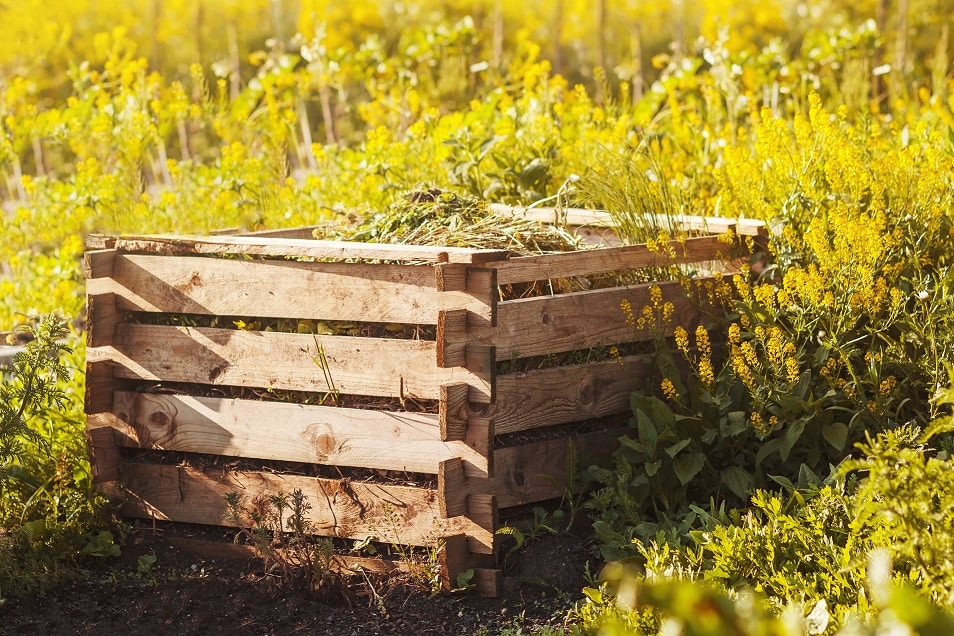
What to Avoid Adding in a Compost
- Treated fruit peels from oranges or bananas can contain pesticides, so avoid adding them to your compost or use them in minimal quantities.
- Walnut tree leaves or twigs can contain damaging chemicals that harm your plants.
- Meat, bones, or fish scraps usually attract pests and take extra time to decompose. Only add them if you use a composter explicitly designed for these materials.
- Fat, grease and dairy products create bad smells and attract pests.
- Pet manure can contain a variety of worms, including ringworm and tapeworm, as well as parasites and pathogens like E. coli and salmonella. It’s not recommended if you make compost for your vegetable garden.
- Perennial weeds or diseased plants will likely spread diseases or weed seeds in your compost.
- Lawn cutting that contains insecticides could harm helpful composting organisms.
- Onion and garlic leftovers in large quantities will impact the smell of your compost bin.
Guide to Start Composting at Home: 8 Steps to Follow
Before we start, you should know that you can compost all year long if the air temperature is above freezing. But, the best time to get started is late summer or early winter.
In cold climates, you can choose to place a compost bin in a warm, practical area such as a basement or garage. Organic waste can still be added to an outdoor compost bin during cold temperatures, but material breakdown won’t start again until the weather warms up.
Step 1: Find a suitable space to start a composting pile.
If you have a backyard, pick an area where the compost is never exposed to extremes of moisture and temperature because the bacteria that break down organic matter into compost love consistency. Whether you opt for a compost pile or a bin, place them in partial shade or shade.
Compost piles are faster when built directly on the soil. If you must compost on a hard surface, add some at the base to facilitate drainage and access to soil organisms. For easiness, place the compost pile close to your house but away from any buildings.
Where to compost in an apartment? Place the compost container on the counter, in your basement, or even in a closet — any dry, relatively dark area will work.
Step 2: Build a structure.
A compost pile works best when surrounded by rocks, boards, concrete blocks, or a fence. You can buy a structure online or turn this into a DIY project. For fencing the pile, you can use materials like repurposed fence panels, fence pickets, shipping pallets, old window frames, or any other recycled materials.
They’re available from online retailers, neighborhood farms, or gardening supply stores if you prefer a compost bin. Or, you can build one using two 5-gallon buckets, one tightly fitting lid, and a drill. Drill holes into the bottom of one bucket, then fit it inside the other bucket and cover it with the lid.
Step 3: Collect ingredients and gradually fill the bin.
The most important step when learning how to compost at home for gardening is understanding how to layer the ingredients. So, you want to be intentional about how you add kitchen scraps to speed up decomposition.
To facilitate the process, you’ll need to store food scraps in a container so you can add them gradually. If you’re a fan of recycling, you can use a plastic container, a bag, or any other packaging that enables you to collect the food scraps and store them in the freezer or the back of the refrigerator and prevent the food scraps from attracting insects or pests.
Ideally, you alternate layers by adding one layer of green ingredients for every two layers of brown materials. The recommended depth of the layer is about 6 inches (15 cm).
If you decide to incorporate sawdust, disperse it to prevent clumping. Also, ensure it doesn’t contain any cutting equipment residues, such as chain oil.
Step 4: Prepare the bottom layer.
This first layer plays a crucial role in developing your compost pile, as it addresses two major challenges: access to good bacteria and drainage. If you place your compost pile directly on the soil or use an open-bottom compost bin, the ground will be your bottom layer. In this case, all you need to get started is to add materials that enable drainage. You can use straws, broken twigs, shredded cardboard egg cartons, or a few thin branches.
If you use a compost bin in your apartment, start with a brown material layer that facilitates drainage and add some soil and manure. Garden soil helps to mask odors, and microorganisms in the soil will accelerate the decomposition process.
Step 5: Enrich with “additional” layers.
Besides the green and brown ingredients, some “extra” layers are needed to ensure you maintain a healthy composting pile. These include items such as:
- Compost starters — coffee grounds or commercially sold products rich in nitrogen that can accelerate the decomposition process when you don’t have enough green ingredients to get started.
- Compost inoculators — anything that adds microorganisms, such as soil, finished compost, or a dedicated bacterial activator.
- Water — is essential when you need to maintain the proper humidity inside your compost pile. Water occasionally if you compost in a closed space or let the rain do the work if you have a composting pile in your garden. Alternatively, you can moisten dry materials before adding them to the mix.
- Potash (wood ashes) — is a high potassium component that will enrich your compost when added in moderate quantities. One layer is recommended every 4-6 regular layers. Don’t substitute it with coal or charcoal ash.
Step 6 (optional): Add worms.
Some of the many macro-organisms that aid in the breakdown of organic material are worms. They’re beneficial for the health of your composting pile. Still, their presence isn’t required to start the decomposition process.
If you create the right conditions in your compost pile, native earthworms will usually make their way into it. The same is true for open-bottom compost bins.
You can buy compost worms for closed bins, usually known as red wigglers, manure worms, or garden worms. They’re excellent for enriching your compost, as they quickly process high quantities of organic material. Compost worms consume almost half their body weight in just a few days, so they’ll constantly need feeding with new organic matter to thrive.
Step 7: Aerate the mix.
The compost pile should be turned every three to seven days to accelerate the decomposition process. As the compost gets older, you can stir it less frequently. If you compost in a bin, aerate the mix every three to four days.
Usually, bacteria take between two to five weeks to make compost.
As a general rule, the more attention you pay to the ratios, the faster your compost will decompose. If your primary concern is simply preventing the disposal of organic waste in landfills and composting is merely an afterthought, just keep an eye on the mix and balance as you go:
- Add more browns and temporarily reduce the greens in your bin if it starts to grow moist.
- Add more greens if the ingredients aren’t decomposing.
Step 8: Harvest the compost.
If you use a compost bin with a drawer or a tray at the bottom, remove them, and you’ll find nutrient-rich, dark compost that you can spread in your garden or lawn. The best times to use compost are during fall or early spring, anticipating the gardening season.
If your compost bin doesn’t divide the materials, you can remove the container to loosen the mix. Move the bin to a new location, then transfer the layers that still need time to decompose, then harvest the compost that is ready to use.
If you’ve built a composting pile, wait until the decomposition process is over, then move the dark compost into a container or use it. As the composting process continues, you’ll notice that the pile always gets smaller, and the ingredients are no longer recognizable. This compost resembles very dark soil and gains a strong earthy smell.
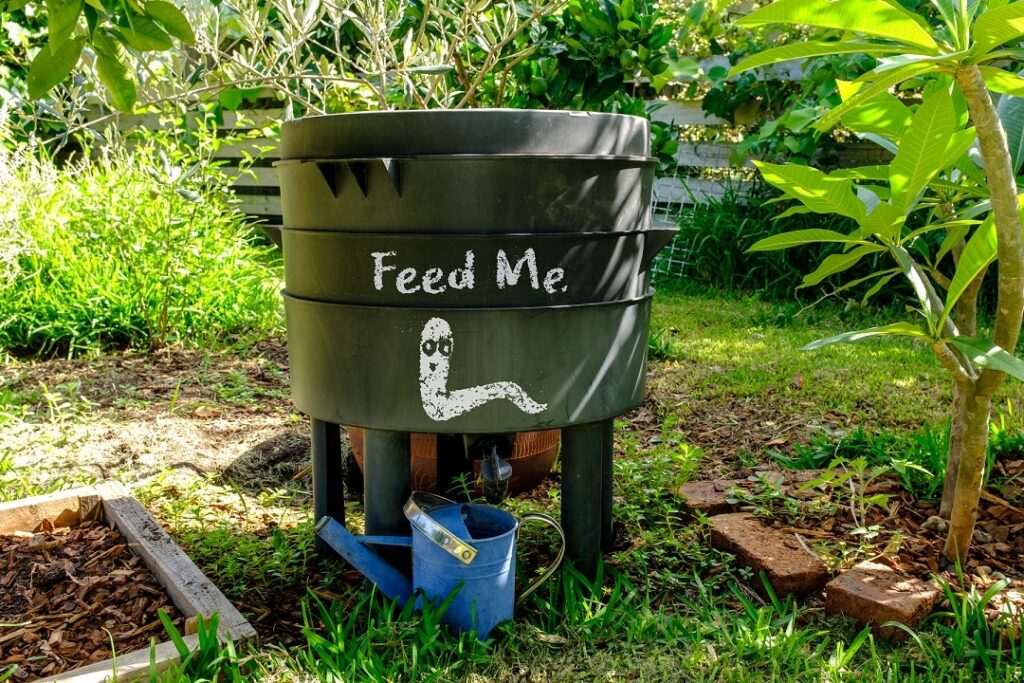
What are the Essential Things and Ingredients to Start Composting?
Let’s recap the equipment you need:
- A compost bin, or if you decide to make one: two 5-gallon buckets, a lid, and a drill
- For a compost pile, you’ll need materials and tools to build a fence
Ingredients necessary to get started:
- Food scraps and other nitrogen-rich materials, such as manure, tea leaves, or grass clippings
- Brown ingredients for the bottom layer and cover each layer of green materials
- A compost starter, wood ashes, and water
Benefits of Composting at Home
- Composting is a self-sustainable waste-management solution. By composting food waste at home, you lower your carbon footprint and contribute to reducing landfill methane emissions.
- Compost helps regenerate the soil. It enriches it by aiding in moisture retention and supporting the growth of helpful bacteria and fungus.
- Compost is a nutrient-rich substance that supports plant growth through organic methods.
- When using compost, you minimize the requirement for chemical fertilizers, significantly impacting your health and the environment.
- Using compost in your garden helps you save water, as the plants grow stronger and have more robust root systems, and they’ll need less watering.
Final Thoughts
Composting is a natural process that replicates how dead plants break down into nutrients for growing ones. By building a compost pile or using a compost bin to manage food waste, you can grow and consume food more effectively and self-sufficiently.
Moreover, composting helps you reduce your carbon footprint and involvement in the environmentally damaging and ineffective industrial waste management system. Getting started is relatively easy and inexpensive, and the long-term benefits are worth the effort.




